 | Olinthus Gilbert Gregory - 1848 - 572 pages
...301 bs., to the same height. 3. The number of the mechanical powers is usually reckoned to be six : viz. the lever, the wheel and axle, the pulley, the inclined plane, the wedge, and the screrc. 4. In treating of these machines, we use the word power, to denote the force which is supposed... | |
 | Miles M. Rodgers - Agriculture - 1848 - 306 pages
...and beautiful pieces of machinery which have ever been constructed. These few elementaiy powers are, the lever, the wheel and axle, the pulley, the inclined plane, the wedge and the screw. The lever is a straight bar placed upon a supporting point called a fulcrum, with the resistance which... | |
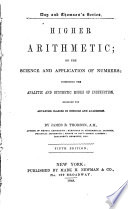 | James Bates Thomson - Arithmetic - 1848 - 432 pages
...ft., the breadth 35 ft., and the depth 25 ft. 1 MECHANICAL POWERS. G48. The Mechanical powers are six, viz: the lever, the wheel and axle, the pulley, the inclined plane, the screw, and the wedge. 649. When the pi.wer and weight act perpendicularly to the arms of a straight... | |
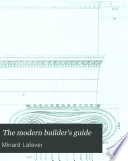 | Minard Lafever - Architecture - 1849 - 306 pages
...be effected by the natural strength without them. The simple machines, called Mechanical powers, are six in number ; viz. the lever, the wheel and axle,...pulley, the inclined plane, the wedge, and the screw ; and of these all the most compound engines consist. The general principle is, that the power or advantage... | |
 | Daniel Adams - Arithmetic - 1849 - 142 pages
...simple machines, employed to facilitate the moving of weights or the overcoming of resistance. They are six in number ; viz., the Lever, the Wheel and Axle,...Pulley, the Inclined Plane, the Wedge, and the Screw. In mechanical powers and in machinery, the thing to be moved, or the resistance to be overcome, is... | |
 | John Craig (F.G.S.) - 1849 - 1148 pages
...mechanics in philosophy ; acting by physical power. Mechanical powers, or elementary machines, are the lever, the wheel and axle, the pulley, the inclined plane, the wedge, and the screw: to which some writers have added the rope-machine and the balance. All these, however, may be reduced... | |
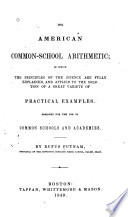 | Rufus Putnam - Arithmetic - 1849 - 402 pages
...complicated, are formed by combining a few simpler machines, commonly called the " Mechanic Powers." They are, the Lever, the Wheel and Axle, the Pulley, the Inclined Plane, the Wedge, and the Screw. In any machine, the force or original prime mover is called thePowER. The resistance to be overcome... | |
 | Charles Tomlinson - 1849 - 188 pages
...resistance. In the composition of machines it is usual to speak of six mechanical porcers ;* namely, the lever, the wheel and axle, the pulley, the inclined plane, the wedge, and the screw; although in reality these contrivances are but applications of the principle of virtual velocities,... | |
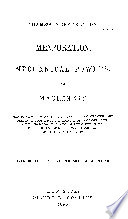 | Daniel Adams - Measurement - 1850 - 144 pages
...simple machines, employed to facilitate the moving of weights or the overcoming of resistance. They are six in number; viz., the Lever, the Wheel and Axle,...Pulley, the Inclined Plane, the Wedge, and the Screw. In mechanical powers and in machinery, the thing to be moved, or the resistance to be overcome, is... | |
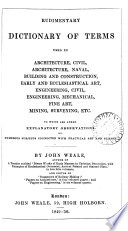 | John Weale - 1850 - 590 pages
...elasticity of parts which are supposed to be perfectly rigid. The mechanical powers, sometimes described as six in number, viz. the lever, the wheel and axle,...pulley, the inclined plane, the wedge, and the screw, are reducible to two only, viz. the lever and the inclined plane, in each of which the effect produced... | |
| |